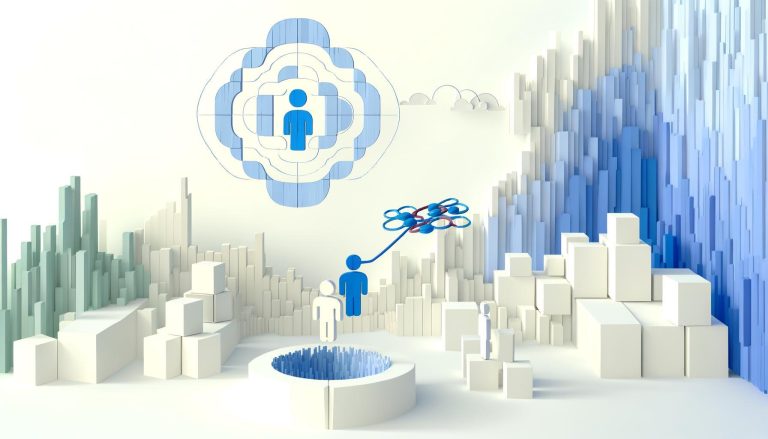Understanding and managing passive-aggressive behavior in the workplace can be a challenging task for both employees and management. With advancements in AI support, there are innovative ways to address this issue effectively. This article will guide you through the intricacies of passive-aggressive behavior, its impacts, and how AI can be utilized to create a healthier work environment.
What is Passive-Aggressive Behavior?
Passive-aggressive behavior is defined by indirect resistance to the demands of others and an avoidance of direct confrontation. This behavior is often characterized by procrastination, sarcasm, sullenness, or deliberate inefficiency in response to tasks.
Key Characteristics of Passive-Aggressive Behavior:
- Procrastination: Delaying tasks or deadlines intentionally.
- Silent Treatment: Ignoring or refusing to communicate with certain individuals.
- Sarcasm: Using sarcastic comments to mask true feelings.
- Playing the Victim: Portraying oneself as a victim to shirk responsibility.
- Subtle Sabotage: Performing tasks poorly to express dissent indirectly.
Impacts of Passive-Aggressive Behavior in the Workplace
Passive-aggressive behavior can lead to a toxic work environment, affecting both productivity and morale. Here are some of the significant impacts:
Decreased Productivity
When employees engage in passive-aggressive behavior, they often avoid tasks or complete them with minimal effort. This leads to a decrease in overall productivity and can disrupt the workflow.
Poor Team Collaboration
Collaboration and teamwork suffer when passive-aggressive behavior is present. It creates a lack of trust among team members and inhibits open communication.
Increased Stress and Tension
A workplace environment riddled with passive-aggressive behavior can become stressful, leading to increased tension and conflict among employees.
Negative Impact on Mental Health
Both the individual exhibiting passive-aggressive behavior and their colleagues may experience negative mental health effects, including anxiety and depression.
Factors Leading to Passive-Aggressive Behavior
Fear of Confrontation
Individuals who fear direct confrontation may resort to passive-aggressive actions as a way to express discontent without facing potential backlash.
Lack of Communication Skills
Poor communication skills can result in misunderstandings and unresolved conflicts, escalating into passive-aggressive behavior.
Workplace Culture
A toxic or highly competitive workplace culture can foster an environment where passive-aggressive behavior thrives.
Stress and Burnout
High levels of stress and burnout can lead individuals to express their frustrations indirectly instead of dealing with issues head-on.
Managing Passive-Aggressive Behavior with AI in the Workplace
AI technologies can offer innovative solutions to identify and manage passive-aggressive behavior effectively. Here’s how:
AI-Driven Behavior Monitoring
AI can monitor communication patterns within the workplace, identifying passive-aggressive behaviors through analysis of emails, messages, and other interactions.
Sentiment Analysis
Sentiment analysis tools powered by AI can assess the tone and intent of communications, providing insights into underlying emotions and potential passive-aggressive behavior.
Training and Development Programs
AI can be utilized to develop training programs designed to improve communication skills, conflict resolution, and emotional intelligence among employees.
Feedback and Reporting Tools
AI-powered tools can facilitate anonymous feedback and reporting of passive-aggressive behavior, helping management address issues before they escalate.
Personalized Support and Counseling
AI-driven chatbots and virtual counselors can provide real-time support and counseling to employees, offering strategies to manage and reduce passive-aggressive behavior.
Practical Tips for Managing Passive-Aggressive Behavior
Encourage Open Communication
Foster a work environment where employees feel comfortable expressing their concerns and frustrations openly, without fear of retribution.
Lead by Example
Management should lead by example, demonstrating healthy communication and conflict resolution practices.
Provide Constructive Feedback
Offer constructive feedback to employees exhibiting passive-aggressive behavior, highlighting specific examples and suggesting alternative ways to express their concerns.
Implement Conflict Resolution Training
Provide training programs focused on conflict resolution and effective communication to all employees.
Establish Clear Policies
Develop and enforce clear policies regarding acceptable behavior in the workplace, outlining consequences for passive-aggressive actions.
Create a Supportive Environment
Create a workplace culture that emphasizes support, collaboration, and mutual respect among employees.
Conclusion
Understanding and managing passive-aggressive behavior in the workplace is crucial for maintaining a healthy and productive environment. By leveraging AI technologies and implementing practical strategies, organizations can effectively address this behavior and foster a culture of open communication and respect.
For continuous support in managing workplace behaviors, consider using the Zenora App. With its mood and habit tracking, goal-setting features, and personalized chat sessions, Zenora can help create a more harmonious and effective work environment.





